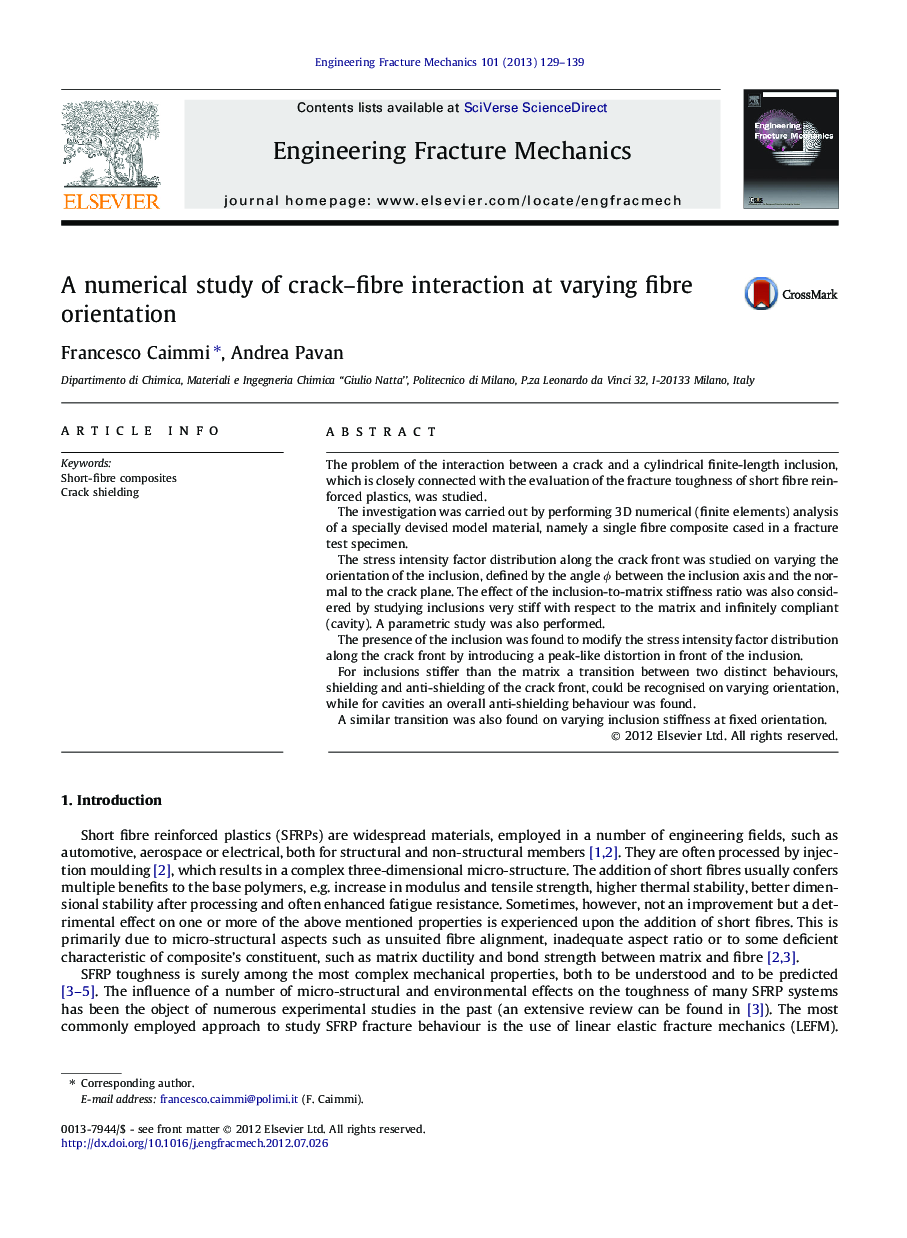| Article ID | Journal | Published Year | Pages | File Type |
|---|---|---|---|---|
| 775008 | Engineering Fracture Mechanics | 2013 | 11 Pages |
The problem of the interaction between a crack and a cylindrical finite-length inclusion, which is closely connected with the evaluation of the fracture toughness of short fibre reinforced plastics, was studied.The investigation was carried out by performing 3D numerical (finite elements) analysis of a specially devised model material, namely a single fibre composite cased in a fracture test specimen.The stress intensity factor distribution along the crack front was studied on varying the orientation of the inclusion, defined by the angle ϕ between the inclusion axis and the normal to the crack plane. The effect of the inclusion-to-matrix stiffness ratio was also considered by studying inclusions very stiff with respect to the matrix and infinitely compliant (cavity). A parametric study was also performed.The presence of the inclusion was found to modify the stress intensity factor distribution along the crack front by introducing a peak-like distortion in front of the inclusion.For inclusions stiffer than the matrix a transition between two distinct behaviours, shielding and anti-shielding of the crack front, could be recognised on varying orientation, while for cavities an overall anti-shielding behaviour was found.A similar transition was also found on varying inclusion stiffness at fixed orientation.
► 3D analysis of the interaction of a stationary crack and a cylindrical inclusion. ► In-plane orientation and the stiffness of the inclusion are varied. ► Stiff inclusions show a shielding effect, soft inclusions an anti-shielding one. ► Transition from shielding to anti-shielding is found at varying orientation.
